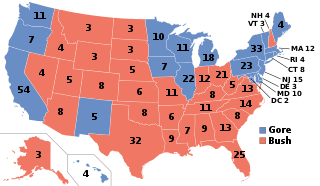
The 2000 United States elections were held on November 7, 2000. Republican Governor George W. Bush of Texas defeated Democratic Vice President Al Gore of Tennessee in the presidential election. Republicans retained control of both houses of Congress, giving the party unified control of Congress and the presidency for the first time since the 1954 elections.

The 2012 United States elections took place on November 6, 2012. Democratic President Barack Obama won reelection to a second term and the Democrats gained seats in both chambers of Congress, retaining control of the Senate even though the Republican Party retained control of the House of Representatives. As of 2022, this is the most recent election cycle in which neither the presidency nor a chamber of Congress changed partisan control, and the last time that the winner of the presidential race provided coattails for their party in both the House of Representatives and the Senate.
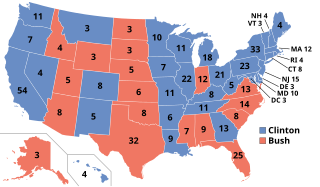
The 1992 United States elections elected state governors, the President of the United States, and members of the 103rd United States Congress. The election took place after the redistricting that resulted from the 1990 Census. Democrats won control of the presidency and both chambers of Congress for the first time since the Republican victory in the 1980 elections.

The 1930 United States elections were held on November 4, 1930, in the middle of Republican President Herbert Hoover's term. Taking place shortly after the start of the Great Depression, the Republican Party suffered substantial losses. The election was the last of the Fourth Party System, and marked the first time since 1918 that Democrats controlled either chamber of Congress.

The 1916 United States elections elected the members of the 65th United States Congress. The election occurred during the Fourth Party System, six months before the United States entered World War I. Unlike 1912, the Democrats did not benefit from a split in the Republican Party, but the Democrats still retained the Presidency and the majority in the Senate. Democrats lost the majority in the House, but retained control of the chamber.
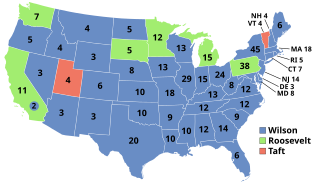
The 1912 United States elections elected the members of the 63rd United States Congress, occurring during the Fourth Party System. Amidst a division between incumbent Republican President William Howard Taft and former Republican President Theodore Roosevelt, the Democratic Party won the Presidency and both chambers of Congress, the first time they accomplished that feat since the 1892 election.

The 1914 United States elections elected the members of the 64th United States Congress, occurring in the middle of Democratic President Woodrow Wilson's first term. Democrats retained control of both houses of Congress, the first time they were able to do so since the American Civil War (1861-1865).
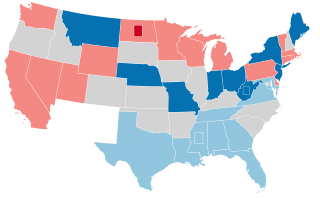
The 1910 United States elections elected the members of the 62nd United States Congress, occurring during the Fourth Party System. The election was held in the middle of Republican President William Howard Taft's term. The Socialist Party won election to Congress for the first time. Arizona and New Mexico were admitted as states during the 62nd Congress.

The 1906 United States elections elected the members of the 60th United States Congress. It occurred in the middle of Republican President Theodore Roosevelt's second term, during the Fourth Party System. Republicans retained control of both houses of Congress.
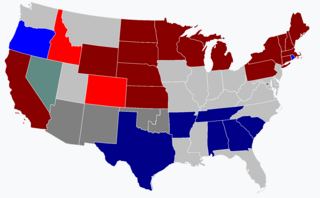
The 1902 United States elections elected the 58th United States Congress, and occurred in the middle of Republican President Theodore Roosevelt's first term, during the Fourth Party System. Roosevelt had become president on September 14, 1901, upon the assassination of his predecessor, William McKinley. Republicans retained a majority in both chambers of Congress, while the Populist Party and Silver Republican Party disappeared from Congress.
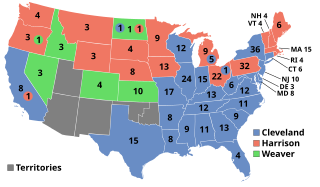
The 1892 United States elections was held on November 8, electing member to the 53rd United States Congress, taking place during the Third Party System. Democrats retained the House and won control of the Presidency and the Senate. Following the election, Democrats controlled the Presidency and a majority in both chambers of Congress for the first time since the 1858 elections.
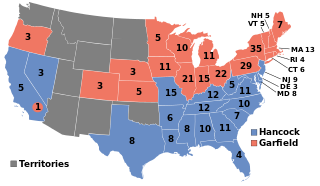
The 1880 United States elections occurred during the Third Party System, and elected the members of the 47th United States Congress. Republicans retained the Presidency and took control of the House. An unclear partisan situation prevailed in the Senate. As the first presidential election after the end of Reconstruction, this election saw the first occurrence of the Democratic Party sweeping the Southern United States; the party would carry an overwhelming majority of Southern states well into the 20th century.

The 1860 United States elections elected the members of the 37th United States Congress. The election marked the start of the Third Party System and precipitated the Civil War. The Republican Party won control of the Presidency and both houses of Congress, making it the fifth party to accomplish such a feat. The election is widely considered to be a realigning election.

The 1848 United States elections elected the members of the 31st United States Congress and the 12th president of the United States. The election took place during the Second Party System, nine months after the Treaty of Guadalupe Hidalgo ended the Mexican–American War. With the issue of slavery dividing the nation, the Free Soil Party established itself as the third most powerful party in Congress. California joined the union before the next election, and elected its first Congressional delegation to the 31st Congress. Whigs won the presidency, but Democrats won a plurality in the House and retained control of the Senate.

The 1828 United States elections elected the members of the 21st United States Congress. It marked the beginning of the Second Party System, and the definitive split of the Democratic-Republican Party into the Democratic Party and the National Republican Party. While the Democrats cultivated strong local organizations, the National Republicans relied on a clear national platform of high tariffs and internal improvements. Political scientists such as V.O. Key, Jr. consider this election to be a realigning election, while political scientists such as James Reichley instead see the election as a continuation of the Democratic-Republican tradition. Additionally, this election saw the Anti-Masonic Party win a small number of seats in the House, becoming the first third party to gain representation in Congress.

The 1830 United States elections occurred in the middle of Democratic President Andrew Jackson's first term, during the Second Party System. Members of the 22nd United States Congress were chosen in this election. The election saw Jackson's Democrats retain control of both chambers of Congress over the National Republicans and other members of the anti-Jackson faction, while the Nullifier Party won seats in Congress for the first time.

The 1858 United States elections occurred in the middle of Democratic President James Buchanan's term and marked the end of the transitional period between the Second Party System and the Third Party System. Members of the 36th United States Congress were chosen in this election. In the first election since the Supreme Court decided Dred Scott v. Sandford, the Republican Party won a plurality in the House, taking control of a chamber of Congress for the first time in the party's history. Although Democrats lost control of the House, they retained their majority in the Senate.

The 1862 United States elections occurred in the middle of Republican President Abraham Lincoln's first term, during the Third Party System and the Civil War. Members of the 38th United States Congress were chosen in this election. West Virginia and Nevada joined the union during the 38th Congress, but several states were in rebellion, reducing the size of both chambers of Congress. The Republican Party kept control of Congress, although it was reduced to a plurality in the House.

The 1874 United States elections occurred in the middle of Republican President Ulysses S. Grant's second term, during the Third Party System. Members of the 44th United States Congress were chosen in this election. The election took place during the Reconstruction Era, and many Southerners were barred from voting. Colorado joined the union during the 44th Congress. Democrats took control of a chamber of Congress for the first time since the start of the Civil War, winning a huge number of seats from House Republicans. However, the Republicans retained a majority in the Senate. The election marked the first occurrence of the six-year itch phenomenon, in which a president's party lost many Congressional seats during the president's second mid-term election.

The 1882 United States elections occurred in the middle of Republican President Chester A. Arthur's term, during the Third Party System. Arthur had become president on September 19, 1881, upon the death of his predecessor, James Garfield. Members of the 48th United States Congress were chosen in this election. Democrats won control of the House, while Republicans won control of the Senate.




















